BENZENE AND AROMATICITY
1/83
Earn XP
Description and Tags
2ND SHIFTING - ORGCHEM LEC
Name | Mastery | Learn | Test | Matching | Spaced |
|---|
No study sessions yet.
84 Terms
Aromatic hydrocarbons
do not undergo electrophilic addition
Considering the structure of benzene ring, the structures has a special type of bonding depicting both localized and delocalized bonds.
Benzene
C6H6
simplest aromatic hydrocarbon with a special type
of bonding that stabilizes the structures
-benzene
used to refer to benzene ring serving as a parent name
e.g. nitrobenzene, methylbenzene, aminobenzene
“phenyl-” (Ph)
used to refer to benzene ring serving as a substituent.
e.g. phenylamine, ethylphenyl ether
“aryl group” (Ar)
general aromatic hydrocarbon substituent of benzene
monosubstitution
benzene is used as parent name
e.g. methylbenzene, chlorobenzene, hydroxybenzene
disubstitution
-ortho, -meta, and -para are terms used to refer to the
position of one of the substituents in reference to the position of the other.
ortho (o-)
1,2-substitution on the ring
meta (m-)
1,3-substitution on the ring
para (p-)
1,4-substitution on the ring
trisubstitution
numbers are assigned to refer to the position
of the substituents in the ring. The lowest set of numbering system is used
and substituents are arranged in alphabetical order.
Aromatic compounds
represented by benzene (simplest) are cyclic, conjugated, stable, planar and undergoes substitution reaction.
follow Hückel’s Rule.
Hückel’s Rule
predicts that a compound which is planar, cyclic, has
a conjugated double bonds will have total of 4n + 2 pi-electrons.
important determinant of aromaticity.
Carboxylic Aromatic Compounds
toluene
aniline
phenol
xylene
cresol
styrene
benzaldehyde
anthracene
phenanthrene
benzo [a] pyrene
Heterocyclic Aromatic Compounds
pyrrole
imidazole
furan
thiophene
pyridine
pyrazine
pyrimidine
indole
purine
quinoline
toluene
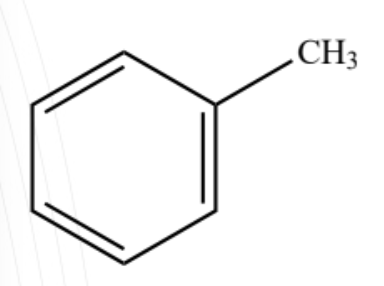
aniline
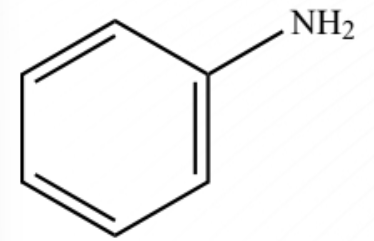
phenol

xylene
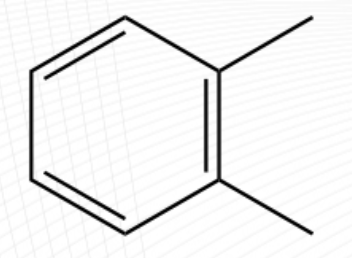
cresol

styrene
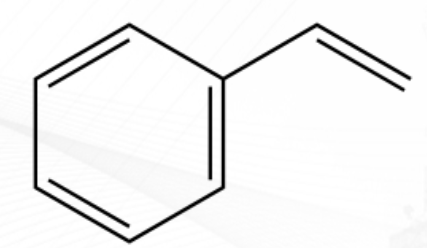
benzaldehyde
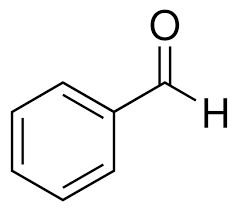
anthracene

phenanthrene

benzo [a] pyrene

pyrrole

imidazole
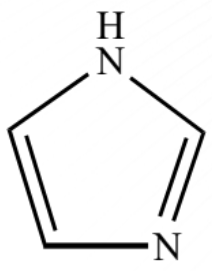
furan
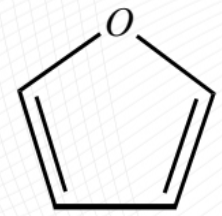
thiophene
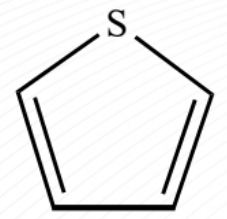
pyridine
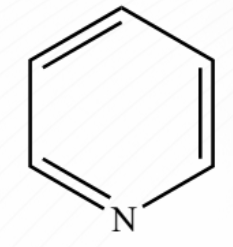
pyrazine

indole
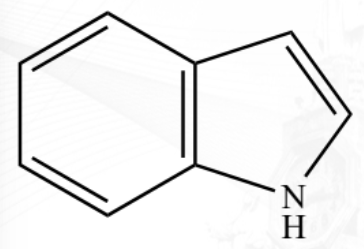
purine
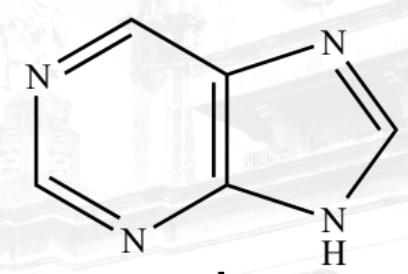
pyrimidine

quinoline

polar mechanism
Aromatic compound (e.g. benzene) reaction follows a _____
which creates an electrophile (R+). The specific mechanism is called
electrophilic substitution reaction (SE).
Halogenation, Nitration, Sulfonation, Friedel-Crafts Alkylation, Friedel-Crafts Acylation
common electrophilic substitution reaction (SE)
Halogenation
substitution of halogens (X2) to a benzene ring
Aromatic compound can be substituted with a polarized halogen which serves as an electrophile (+X).
FeBr3
HALOGENATION:
catalyst of Br2
FeCl3
HALOGENATION:
catalyst of Cl2
H2O2 or CuCl2
HALOGENATION:
catalyst of I2
heat (~500°C)
HALOGENATION:
catalyst of CuF2
polarized halogen (X+)
STEPS IN HALOGENATION:
The catalyst aids in creating a (a=?). This creates the electrophile to be added to the aromatic compound.
The polarized electrophile (b=?) electrons
and breaking it in order for the electrophile to attach to
the ring and create a carbocation intermediate.
The polarized catalyst attracts the ring -H and the electrons
are delocalized back to the carbocation. The (c=?) in the process.
a=
attracts the pi bond
STEPS IN HALOGENATION:
The catalyst aids in creating a (a=?). This creates the electrophile to be added to the aromatic compound.
The polarized electrophile (b=?) electrons
and breaking it in order for the electrophile to attach to
the ring and create a carbocation intermediate.
The polarized catalyst attracts the ring -H and the electrons
are delocalized back to the carbocation. The (c=?) in the process.
b=
catalyst is restored
STEPS IN HALOGENATION:
The catalyst aids in creating a (a=?). This creates the electrophile to be added to the aromatic compound.
The polarized electrophile (b=?) electrons
and breaking it in order for the electrophile to attach to
the ring and create a carbocation intermediate.
The polarized catalyst attracts the ring -H and the electrons
are delocalized back to the carbocation. The (c=?) in the process.
c=
Nitration
substitution of a nitro group (+NO2) to a benzene ring
H2SO4
catalyst of Nitration
ArNO2
product of Nitration
Fe/SnCl2
reducing agents of Nitration
arylamine (ArNH2)
product of Nitration with reducing agents
+NO2
STEPS IN NITRATION:
The catalyst removes a -OH from HNO3 producing the (a=?).
The pi-electrons then bonds with +NO2.
Water acts as a base and bonds with the ring -H. The electrons
from the C-H bonds moves back to the carbocation forming
the final product, (b=?).
a=
nitrobenzene
STEPS IN NITRATION:
The catalyst removes a -OH from HNO3 producing the (a=?).
The pi-electrons then bonds with +NO2.
Water acts as a base and bonds with the ring -H. The electrons
from the C-H bonds moves back to the carbocation forming
the final product, (b=?).
b=
Sulfonation
substitution of +SO3H (sulfonic acid) to a benzene ring
fuming H2SO4
reagent and catalyst of Sulfonation
+SO3H, sulfonic acid
product of Sulfonation
activated electrophile +SO3H
STEPS IN SULFONATION:
Simultaneously, as the H2SO4 reacts with SO3 to form the (a=?),the electrons in the double-bond is drawn to the electrophilic +S atom.
As sulfonic functional group attaches to the ring, the -H attached to the target C is cleaved and the electrons is delocalized to the nearby carbon to restore the ring double bond.
a=
Friedel-Crafts Alkylation
substitution with +R (alkyl group) to a benzene ring
The reaction do not succeed on aromatic rings with initial
substitution of highly electron-withdrawing groups or basic amino group for protonation e.g. —NO2, -CN, -SO3H, and/or -COR
Hydride shift / Alkyl shift may occur to form more stable product.
aluminum halide (AlX3)
catalyst of Friedel-Crafts Alkylation
alkyl electrophile (R+, alkyl)
product of Friedel-Crafts Alkylation
electrophile, R+
STEPS IN FRIEDEL-CRAFTS ALKYLATION:
The AlCl3 catalyst aids in the break down of the alkyl halide producing the (a=?).
The pi electrons (b=?) to the electrophile, R+.
The catalyst (c=?), removing it from the ring. The electrons from the C-H bond delocalizes back to the ring.
a=
bonds
STEPS IN FRIEDEL-CRAFTS ALKYLATION:
The AlCl3 catalyst aids in the break down of the alkyl halide producing the (a=?).
The pi electrons (b=?) to the electrophile, R+.
The catalyst (c=?), removing it from the ring. The electrons from the C-H bond delocalizes back to the ring.
b=
binds the H
STEPS IN FRIEDEL-CRAFTS ALKYLATION:
The AlCl3 catalyst aids in the break down of the alkyl halide producing the (a=?).
The pi electrons (b=?) to the electrophile, R+.
The catalyst (c=?), removing it from the ring. The electrons from the C-H bond delocalizes back to the ring.
c=
Hydride/Methide shift
when a negatively-charged hydrogen (-H, hydride) or a negatively-charged alkyl, usually a methyl (-CH3, methide) is translocated to a nearby carbocation to form a more stable carbocation.
Friedel-Crafts Acylation
substitution with +COR (acyl group) to a benzene ring
aluminum halide (AlX3) [AlCl3 and AlBr3]
catalyst of Friedel-Crafts Acylation
alkyl electrophile (+COR, acyl)
product of Friedel-Crafts Acylation
Hydrogenation, Bromination of Alkyl Side Chain, Oxidation of Alkyl Side Chains, Reduction of Aryl Alkyl Ketones
Reaction of Benzene (Aromatics) that does not follow the SE mechanism
Hydrogenation
addition of hydrogen (H2) to a benzene ring to create a saturated product.
H2 atom
added to Hydrogenation
Pt or Rh (Rhodium) metal catalyst under high pressure
catalyst of Hydrogenation
Bromination
addition of bromine (Br2) to an alkyl side chain of a benzene ring
occurs on the benzylic position with an alkylbenzene
N-bromosuccinimide (NBS) and benzoyl peroxide (Ph(CO2)2)
radical initiator of Bromination
Oxidation
complete oxidation of alkyl side chain on a benzene ring.
The alkyl side chain will only be oxidized if there is a benzylic hydrogen (H attached to the benzylic carbon) present in the structure.
KMnO4 in H2O
catalyst of Oxidation
COOH
product of Oxidation
Reduction
reduction oxygen bonds in a ketone (C=O) and nitro group (-NO2)
catalytic hydrogenation
Both aryl alkyl ketones (product of FC Acylation) and nitro substituted
(product of nitration) can be reduced
H2 / Pd
catalyst of reduction
reactivity and orientation
Substituents can affect SE reactions in 2 ways:
Reactivity
can be affected by any substitution.
It can activate (increase reactivity) and deactivate (decrease reactivity) of the ring.
The reactivity of the ring can affect whether subsequent reactions can still take place on the ring.
Orientation
consequent substitutions attached on the ring are affected by pre-existing substituents.
Substitutions can be directed at the ortho-, meta-, and para- positions of the ring.
Acyl containing (aldehyde, ketone)`
Acid and Ester if benzene is directly bonded to carbon
Amino (3 degree)
Nitro
Cyano
Sulfonyl
Meta-Directing Deactivators
Halogens (-X)
I, Br, Cl, F
Ortho- and Para-Directing Deactivators
Alkyl (-R)
Aryl/Phenyl (Ar-)
Alkoxy (-OR)
Hydroxy (OH-)
Thiol (SH-)
Amino (-NH2, 1 degree, 2 degree)
Amido (-NO2)
Ester
Ortho- and Para-Directing Activators